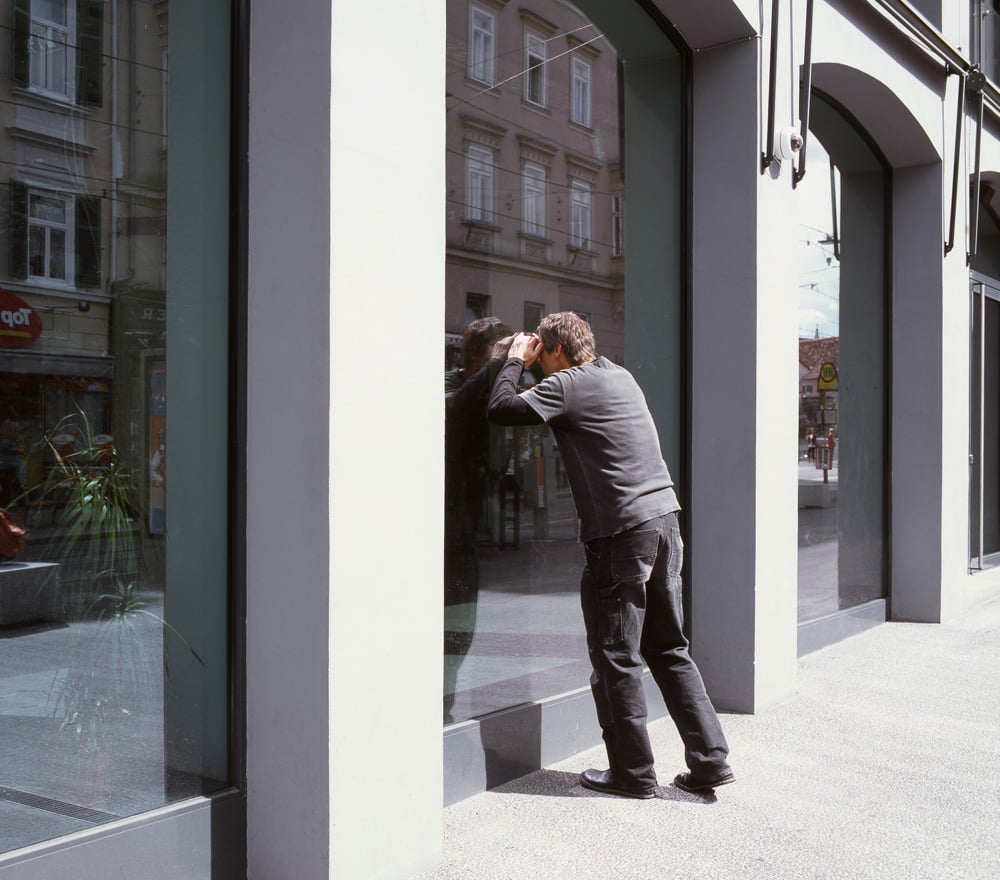
© » KADIST
Nidhal Chamekh
Drawing & Print (Drawing & Print)
Nos visages ( Our Faces ) continues Nidhal Chamekh’s research around visual souvenirs of figures of the past and the light they might shed on our contemporary era. For this series of drawings, the artist draws from articles of French colonial propaganda, specifically the magazine Le Miroir , founded in 1910. In these documents Senegalese and Berber “infantrymen” participating in the First World War were represented in a way that situates them “somewhere between the ethnographical survey and the hackneyed colonial and orientalist image” says Morad Montazami.

© » KADIST
Fabrice Hyber
Drawing & Print (Drawing & Print)
Drawing, which is the essential embodiment of Fabrice Hyber’s artistic thinking, is at the origin of all his works. The artist uses accumulation, hybridization and mutation to create constant shifts between extremely varied domains. Each work is just an intermediate, evolving stage of this “work in progress” that spreads like a proliferation of thought, establishing links and exchanges that then help to create other connections.

© » KADIST
Lam Tung Pang
Drawing & Print (Drawing & Print)
Lam Tung Pang created Sketches from train ride Chicago to San Francisco during his travels through the United States researching American curatorial strategies for representing traditional Chinese painting in museums and cultural institutions. The drawings incorporate both traditional and contemporary Chinese landscape techniques to reflect on the memory, history, and aesthetic practices of the Chinese laborers who played a prominent role in the American westward expansion. By representing the Western landscape according to Chinese aesthetics, Lam calls attention to the distortions and cultural specificity of American representations of the Western landscape and non-Western cultures.

© » KADIST
Fabrice Hyber
The works of Fabrice Hyber provoke divergent ways of thinking. In a kindred spirit with Raymond Hains, image and writing are intertwined. Drawings and diagrams are visually direct, as shown in the series of “Peintures Homéopathiques” (“Homeopathic Paintings”), collages covered in transparent resin (1986-1988).

© » KADIST
Roman Ondak
Drawing & Print (Drawing & Print)
As the caption purposely admits, these drawings were made by friends of Ondák’s at home in Slovakia asked to interpret places he has journeyed to. The description of the blond artist wearing the same outfit and bag in places of transit like airports, stations or streets are faithful in straightforward (verging on naïve) styles. His own skill as artist is displaced and delegated to others with no particular gift in draftsmanship.

© » KADIST
Raymond Pettibon
The five works included in the Kadist Collection are representative of Pettibon’s complex drawings which are much more narrative than comics or cartoon. The images allude to recurring topics, such as the superhero (present both in Untitled Superman and No title without the comics ), a book cover (his literary sources), or a mushroom cloud. Inspired by the writings of William Faulkner, Daniel Defoe, Gustave Flaubert, Marcel Proust, and James Joyce, Pettibon’s sophisticated, witty drawings combine image and text to explore the gamut of American popular culture.

© » KADIST
Karl Haendel
Drawing & Print (Drawing & Print)
Haendel’s series Knights (2011) is a set of impeccably drafted, nine-foot-tall pencil drawings depicting full suits of armor. The series riffs on previous investigations by the artist such as his meticulous depictions of masculine political figures, which included a headless J. Edgar Hoover and a Hitler head floating vulnerably in the center of a white expanse (Hitler’s iconic mustache was crafted from the artist’s pubic hair). Rendered in soft graphite, the imposing Knights embody the ostensibly conflicting ideals of chivalrous deference and invulnerable masculinity.

© » KADIST
Raymond Pettibon
The five works included in the Kadist Collection are representative of Pettibon’s complex drawings which are much more narrative than comics or cartoon. The images allude to recurring topics, such as the superhero (present both in Untitled Superman and No title without the comics ), a book cover (his literary sources), or a mushroom cloud. Inspired by the writings of William Faulkner, Daniel Defoe, Gustave Flaubert, Marcel Proust, and James Joyce, Pettibon’s sophisticated, witty drawings combine image and text to explore the gamut of American popular culture.

© » KADIST
Raymond Pettibon
The five drawings included in the 101 Collection are representative of Pettibon’s characteristic cartoonish style. The images in them allude to his ever-recurring topics, such as the superhero (present both in Untitled Superman and No title without the comics ), a book cover (his literary sources), or a mushroom cloud. However, it is worth noting that this formal quality of his work is not exhausted in the simple illustration.
Raymond Pettibon
- location: Hermosa Beach, California
- year born: 1957
- gender: male
- nationality: American
- home town: Tucson, Arizona
Fabrice Hyber
In each of his self-portraits, Fabrice Hyber (he removed the last “t” in Hybert in 2004) is elusive...
Roman Ondak
- location: Zilina, Slovenská Republika
- year born: 1966
- gender: male
- nationality: Slovakian
Karl Haendel
- location: Los Angeles, California
- year born: 1976
- gender: male
- nationality: American
- home town: New York, New York
Nidhal Chamekh
Based between his native Tunis and Paris, Nidhal Chamekh’s work is an investigation into history as a point of access to our contemporary times...
Lam Tung Pang
Lam Tung Pang uses both traditional and non-traditional Chinese ink techniques and materials for his landscapes, referencing notions of collective memory that relate to specific sites...
-
2000-2009
Raymond Pettibon
2000The five works included in the Kadist Collection are representative of Pettibon’s complex drawings which are much more narrative than comics or cartoon...
Fabrice Hyber
Drawing & Print
2003(Drawing & Print) Drawing, which is the essential embodiment of Fabrice Hyber’s artistic thinking, is at the origin of all his works...
Roman Ondak
Drawing & Print
2003(Drawing & Print) As the caption purposely admits, these drawings were made by friends of Ondák’s at home in Slovakia asked to interpret places he has journeyed to...
Raymond Pettibon
2006The five works included in the Kadist Collection are representative of Pettibon’s complex drawings which are much more narrative than comics or cartoon...
-
2010-2019
Karl Haendel
Drawing & Print
2011(Drawing & Print) Haendel’s series Knights (2011) is a set of impeccably drafted, nine-foot-tall pencil drawings depicting full suits of armor...
Lam Tung Pang
Drawing & Print
2013(Drawing & Print) Lam Tung Pang created Sketches from train ride Chicago to San Francisco during his travels through the United States researching American curatorial strategies for representing traditional Chinese painting in museums and cultural institutions...
Nidhal Chamekh
Drawing & Print
2019(Drawing & Print) Nos visages ( Our Faces ) continues Nidhal Chamekh’s research around visual souvenirs of figures of the past and the light they might shed on our contemporary era...



